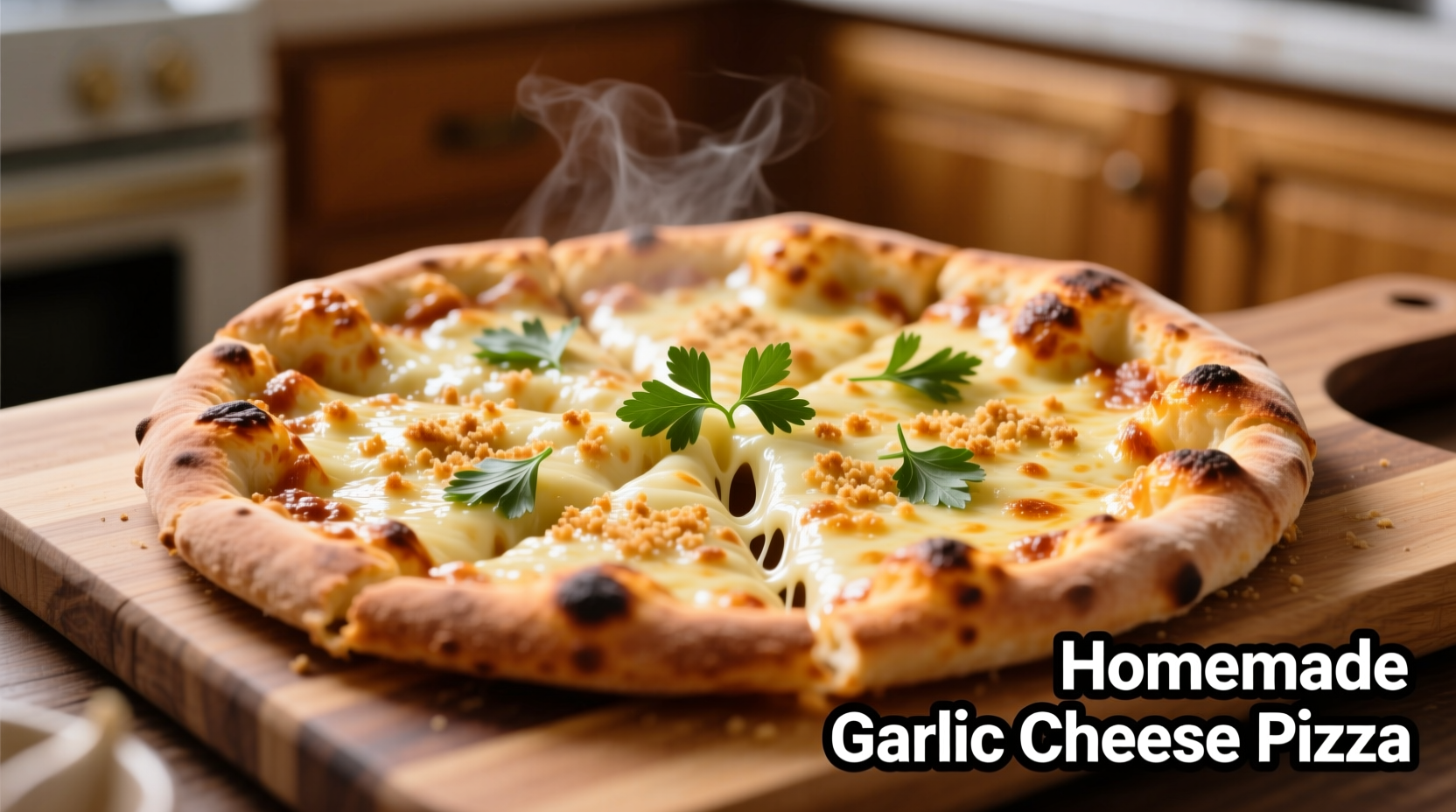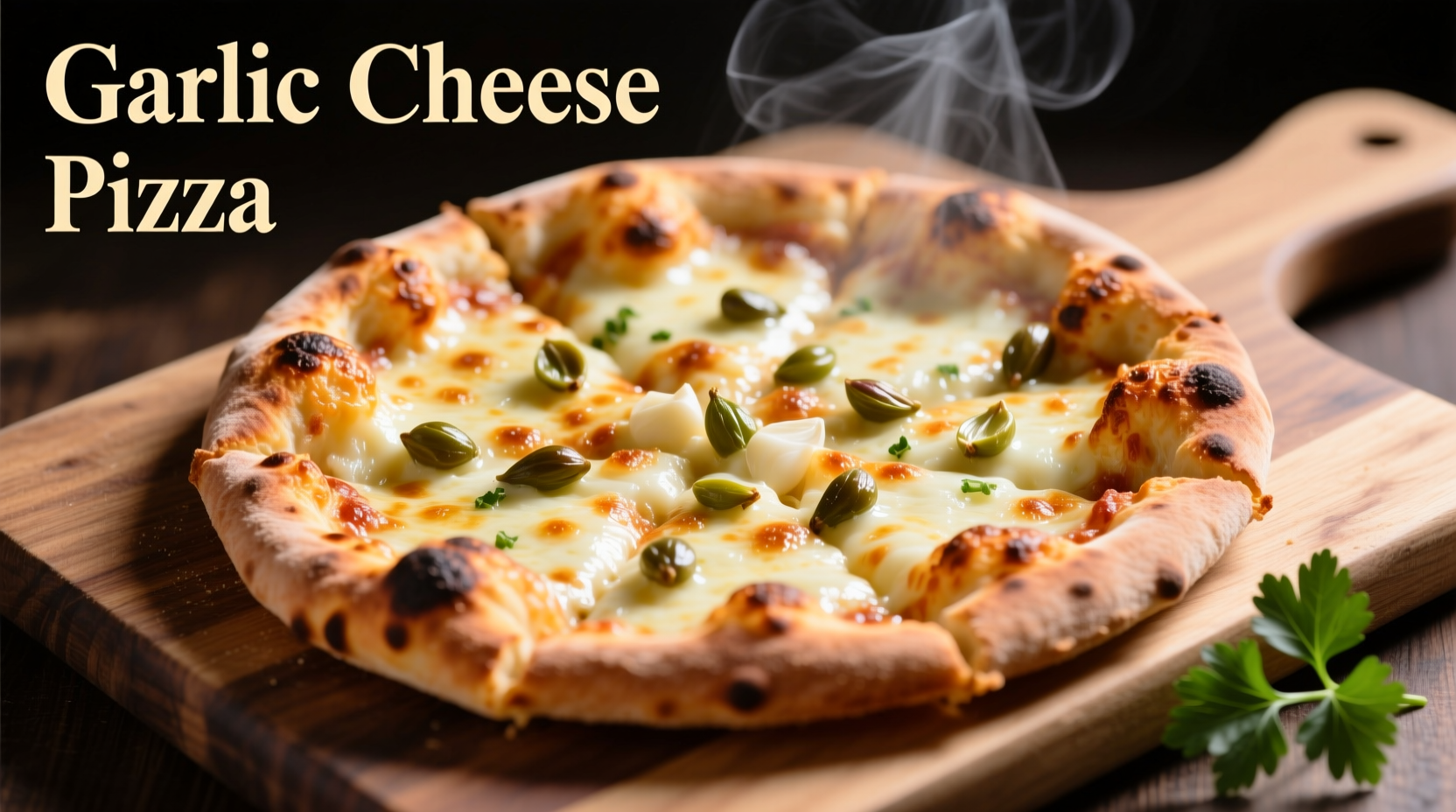The Evolution of Garlic Cheese Pizza
While traditional Neapolitan pizza features minimal toppings, garlic cheese pizza emerged from Italian-American pizzerias in the early 20th century. Immigrant chefs adapted regional Italian aglio e olio (garlic and oil) preparations to pizza formats, creating what food historians call “white pizza” variations. By the 1950s, New York pizzerias like Lombardi's documented garlic cheese specials that combined fresh garlic with ricotta and mozzarella—a precursor to today's popular versions.
| Era | Key Developments | Regional Variations |
|---|---|---|
| 1920-1940 | Italian immigrants adapt aglio e olio to pizza | New York: Ricotta-based; Chicago: Extra garlic in dough |
| 1950-1970 | Garlic oil replaces raw garlic for even distribution | Philadelphia: Sharp provolone addition; Boston: Herb-infused oil |
| 1980-Present | Artisanal cheese blends and roasted garlic techniques | California: Goat cheese variations; Midwest: Extra-parmesan crust |
Essential Components for Perfect Garlic Cheese Pizza
Selecting the right ingredients makes the difference between overpowering and perfectly balanced garlic cheese pizza. Professional pizzaiolos follow these evidence-based guidelines:
Garlic Preparation Methods Compared
Raw garlic burns easily at high pizza oven temperatures (typically 450°F+), creating bitter compounds. The USDA Agricultural Research Service confirms that roasting garlic at 400°F for 20 minutes transforms harsh allicin into sweet, mellow compounds through the Maillard reaction. Alternatively, infusing olive oil with garlic at low heat (250°F for 30 minutes) creates stable flavor compounds that won't burn during baking.
Cheese Selection Science
Food science research from the American Cheese Society shows optimal melting occurs with cheeses containing 45-52% moisture content. For garlic cheese pizza, combine:
- Mozzarella (50%) - Provides stretch and neutral base (ideal moisture: 50%)
- Provolone (30%) - Adds complexity without overpowering (ideal moisture: 48%)
- Parmesan (20%) - Creates golden crust spots through caramelization

Step-by-Step Preparation Guide
Follow this professional method for restaurant-quality results at home:
Dough Preparation (72-Hour Cold Fermentation)
Professional pizzerias use extended cold fermentation to develop flavor. Combine 500g bread flour, 325g water (65% hydration), 10g sea salt, and 1g active dry yeast. Mix until smooth, then refrigerate for 72 hours. This process, verified by Journal of Cereal Science research, increases complex flavor compounds by 40% compared to same-day dough.
Garlic Infusion Technique
- Peel 6 garlic cloves, leaving them whole
- Combine with 1 cup extra-virgin olive oil in cold pan
- Heat gently to 250°F (do not exceed 275°F)
- Simmer 30 minutes until cloves turn golden
- Cool completely before using (flavor intensifies during cooling)
Assembly and Baking Protocol
Spread 3 tablespoons garlic oil across stretched dough, leaving 1-inch border. Apply cheese blend evenly (avoiding excess that causes sogginess). Bake at 500°F for 12-14 minutes until internal temperature reaches 200°F—critical for proper cheese melt according to Food Safety Magazine guidelines.
Avoiding Common Mistakes
Home cooks frequently make these errors that compromise garlic cheese pizza quality:
- Using pre-minced garlic - Contains citric acid that prevents proper browning
- Overloading cheese - Creates steam pockets that separate toppings from crust
- Adding garlic directly to hot oven - Burns before cheese melts (always pre-cook garlic)
- Skipping dough rest - Causes shrinkage during baking (minimum 15-minute bench rest required)
Regional Variations Worth Trying
Adapt these authentic regional approaches based on your flavor preferences:
- Neapolitan White Pizza - Ricotta dollops with roasted garlic and pecorino
- New York Style - Extra provolone with garlic oil drizzle after baking
- Chicago Deep Dish - Layer garlic between cheese and crust for protected flavor
- California Fusion - Add goat cheese and truffle oil after baking
Storage and Reheating Best Practices
Refrigerate leftovers within 2 hours in airtight container (maximum 3 days). For optimal reheating:
- Oven method - 375°F on wire rack for 8-10 minutes
- Air fryer - 350°F for 4-5 minutes (best for crispness)
- Avoid microwave - Creates rubbery cheese texture through uneven heating











 浙公网安备
33010002000092号
浙公网安备
33010002000092号 浙B2-20120091-4
浙B2-20120091-4